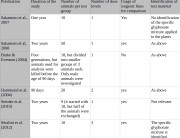Summary answer:
Regarding NK603 maize, Séralini used the same two doses as Monsanto used in its 90-day study and added a third dose, which is necessary to draw any conclusions about dose response in relation to any harmful effects. Regarding Roundup, Séralini’s lowest dose was below the level permitted in drinking water in the EU; the mid dose is the maximum allowed in some animal feeds in the USA; and the high dose is half the concentration used in agricultural spraying.
Detailed answer:
In its 90-day rat feeding study on NK603 maize, Monsanto used two doses of 11% and 33% GM maize in the diet. For consistency and to enable comparison with Monsanto’s study, Séralini used these two doses but added a third, 22% GM maize, in order to properly evaluate any dose response in relation to any harmful effects.
Monsanto’s use of two doses means that no conclusions can be drawn about dose response. It’s possible to draw a straight line between any two points on a graph, regardless of their relative positions; a third point is needed to draw any valid conclusion.
With regard to Roundup, the commercial formulation was tested, not just the active herbicide ingredient glyphosate, which was tested in the industry studies carried out to gain regulatory authorization.
The lowest dose administered was only 0.1 ppb glyphosate equivalent of Roundup. This level can be found in drinking water, is well below permitted levels for drinking water, and is thus considered safe. The mid dose of 400 ppm was chosen as this is the maximum level allowed in some animal feeds in the USA, even though it is 20 times higher than the maximum permitted in any feed in the EU. The highest dose used was half the strength of the agriculturally used concentration.
The expectation was that the highest dose would be toxic. The lowest dose was not expected to give any negative outcomes, with the mid dose being the “unknown” element that was being tested.
The surprise was that the lowest dose was as toxic as the higher doses, especially in female animals.
Worryingly, the lowest dose of 0.1 ppb or 50ng/L glyphosate equivalent is half the level permitted in drinking water in the EU, 100ng/L.[1] However, the situation in the USA is far worse. In the USA the permitted level (maximum contaminant level) of glyphosate in drinking water is an astonishing 700 ppb (700 micrograms per litre);[2] that is, 14,000 times higher than what was found to be toxic in Séralini’s study.
Why the differences between levels that regulators claim to be safe and that Séralini found to be toxic? The answer is that Séralini finally did the study that regulators should have required, on the commercial Roundup formulation and not glyphosate alone. Commercial Roundup is a complex mixture of glyphosate and surfactants/adjuvants. These act synergistically to make the formulation far more toxic than glyphosate alone, as Séralini’s team saw in their test-tube analysis of human cells.[3]
As surveys of glyphosate/Roundup residues in water are few and far between, it is possible that the population is being exposed to dangerous levels of this widely used herbicide.
References:
1. European Union. Council Directive 98/83 EC of 3 November 1998 on the quality of water intended for human consumption. Official Journal of the European Communities. 5 December 1998: 42. http://eur-lex.europa.eu/LexUriServ/LexUriServ.do?uri=OJ:L:1998:330:0032:0054:EN:PDF
2. US EPA. Basic information about glyphosate in drinking water. Updated 9 February 2014. http://water.epa.gov/drink/contaminants/basicinformation/glyphosate.cfm#four
3. Richard S, Moslemi S, Sipahutar H, Benachour N, Seralini GE. Differential effects of glyphosate and roundup on human placental cells and aromatase. Environ Health Perspect. Jun 2005; 113(6): 716-720.
Source of criticism:
Monsanto
http://www.monsanto.com/products/Documents/ProductSafety/seralini-sept-2012-monsanto-comments.pdf


















